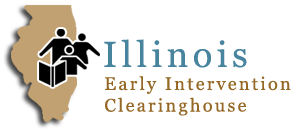Autism
This topical guide will introduce you to important books, videos, and information resources available from the EI Clearinghouse and other sources. Contact us via online form or by phone (1-877-275-3227) to request a resource listed below (or ask your local public librarian). Note that some videos may be viewed online, and journal titles will take you to the publisher’s homepage.
Table of Contents

EIC Resources
Books
Full of ideas for both teachers and parents, this book provides hundreds of ways to teach sensory integration, communication, language, behavior, daily living, and social skills to children with autism. It also provides teachers with ideas of how to create a classroom environment that will support students with autism.
This book is filled with everyday situations that a teenager with autism may encounter, as well as discussion questions that encourage a teenager with autism to think about and react to these situations. Topics addressed include self-esteem, problem-solving, friendships, feelings, self-control, conflict, family, community, relationships, internet safety, and classroom and job skills.
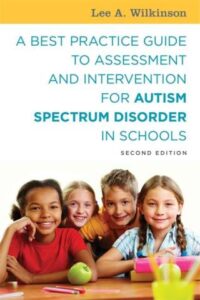
Fully updated to reflect DSM-5 and current assessment tools, procedures, and research, this book provides a practical and scientifically-based approach to identifying, assessing, and treating children and adolescents with Autism Spectrum Disorder (ASD) in school settings.
Presents, from a child’s perspective, the typical traits that many people with autism share.
This book provides an alphabetical categorization of the possible issues a child with autism spectrum disorder (ASD) may encounter.
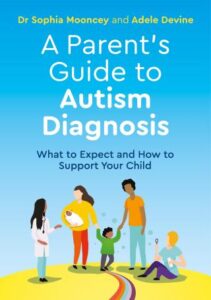
Written by a highly experienced author team, this book will support parents from the moment somebody mentions autism, through the diagnosis process and beyond.
Parents play a large role in the early development of their young child with autism. This book is full of natural strategies and routines that parents can use every day to have positive interactions with their young child with autism and to, in turn, encourage positive development.
This book covers the historical and current understanding of autism spectrum disorders. The author also refers to the importance of screening and early intervention as well as areas of research.
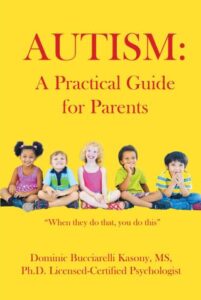
This book contains substantial information about behavioral interventionists to help mediate the behavioral concerns for children with autism, including an extensive reading list to help supplement the parent’s working knowledge and interventions.
This book contains nine lesson plans (from Level 1 to Level 9) that focus on teaching reading comprehension in whole-group instruction. Each lesson is focused on a different animal and contains two worksheets to supplement the lesson. Data collection sheets that are specific to some of the lesson goals and objectives are also provided.
This book focuses on the transitions from school to the real world for young adults with autism. It provides information on positive behavior supports, educational and transitional planning, transition goals, understanding adult services and benefits, working in an integrated work environment, postsecondary options, life skills, and living in the community as an adult.
The author of this book interviewed multiple siblings of children with autism about what they like to do with their brothers and sisters, and how autism impacts their brothers and sisters. This book is full of the true life stories of children who have a sibling with autism, as well as pictures of the siblings together. The stories are written for kids, and they cover topics that are easy for children who have a brother or sister with autism to relate to.
This book helps parents understand how ASDs are defined and diagnosed and offers an overview of the most current behavioral and developmental therapies.
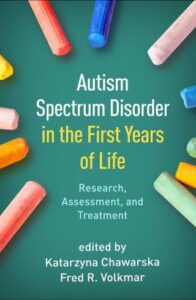
This book presents dramatic advances in understanding and treating autism spectrum disorder in very young children.
This book contains information on research issues and approaches to assessing social, cognitive, adaptive, communication, and sensory-motor impairments in the first two years of life. The book also addresses ways to support families in coping with an early ASD diagnosis and in making informed decisions on the use of controversial treatments.
Hall discusses the causes and characteristics of ASDs as well as best practices for increasing academic achievement for students with autism. The text includes the use of practices mandated by IDEA 2004 and NCLB.
This book provides step-by-step advice on toilet training, behavior, feeding, and more for children with autism
Written by a married couple with autism, this book focuses on the social interactions that adults with autism face while dating. The husband and wife both present their own stories and perspectives about a variety of dating topics, including dating and friendship, relationship statuses, physical intimacy, marriage, and long-term commitment.

This book provides functional, in-depth teaching strategies for children on the spectrum who struggle with communication.
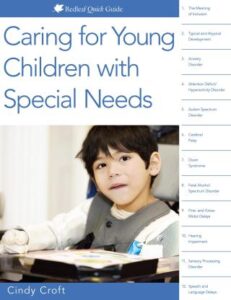
This book gives you a quick overview on many topics relate to working with young children with special needs. Learn about inclusion in early childhood programs and disability law, as well as typical vs. atypical development.
The authors include information to help parents recognize the warning signs of developmental delays and begin treatment as early as possible.
Drawing on his own lived experience of Autism Spectrum Disorder (ASD), the author provides guidance on how to take advantage of the supposed disadvantage. Filled with often hilarious anecdotes, spanning the confusion of his early diagnosis, to his marriage and life with his four children, he proffers his advice on how to cope with everything from school work to flirting.
This 300-page online book includes information related to early intervention, preschool, and school programs designed for children with autism from birth to age 8. Issues examined relate to the education of children with autism: early intervention, diagnosis and classification, inclusion, assistive technology, and the rights of children with autism under the Individuals with Disabilities Education Act. Available free online.
The authors describe the Floortime approach and show how to enter a child’s world and bring her or him into a shared world of relating, communicating, and thinking.
Focused on girls with autism during their teenage years, this book addresses many key issues of this stage of life, including: puberty, sexuality, friendships, self-perception, and personal safety. It also emphasizes how cognition, communication, behavior, social, and sensory issues associated with autism can impact this stage of life for girls with autism.
This is an accessible guide for all trainees and teachers, providing practical, evidence-informed ways to support neurodivergent learners that will also benefit all pupils.
This is the story of the discovery of autism, and the first child diagnosed with the disorder, as well as a history of the last eighty years of progress in understanding what autism is.
Communication difficulties are a common characteristic of autism, and this book emphasizes a variety of different methods that can be used to support the communication of children with autism. Focusing particularly on the Applied Verbal Behavior method (AVB), the authors provide insight into many aspects of autism and communication, including emerging language, social language, fluency, persistent vocalizations, and Echolalia.
The book aids parents in understanding the basics of ASD, the roles of various professionals who address communication problems, as well as the treatment delivery systems and critical target skills (e.g., motor imitation, joint attention, play, spontaneous communication) for improving communication for children with ASD.
Supported by stories of real children with autism, this book provides parents and service providers with a connection between autism and anxiety, as well as an understanding of the role anxiety plays across the stages of development. It also includes a variety of treatment options for anxiety in both individuals with autism, and the family members of individuals with autism.
Written by an author whose father has autism, this book builds upon the author’s real experiences and provides children who have a parent with autism with an understanding of how autism may impact their parent. It also includes worksheets for parents and children to complete together in order to come to understand one another better.
This book present nine strength-based mindsets necessary to successfully work with young people on the autism spectrum.
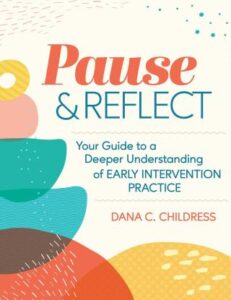
This book provides extensive information about conducting EI visits and gathering information to individualize interventions and develop service plans. This book also allows PR actioners to reflect on what they do, why, and how they do it.
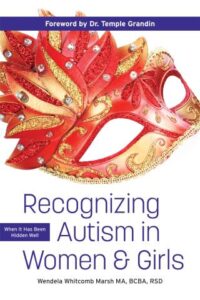
This book provides the perspective needed to see how autism manifests un gendered ways, allowing for a more accurate diagnosis.
Written more specifically for young adults and adult siblings of individuals with autism, this book is a compilation of stories about growing up with a sibling with autism. The stories touch upon a variety of different circumstances and emotions, but all relate back to the experiences of growing up with a sibling with autism.
The authors of this book provide parents with a perspective of what it may be like to be the sibling of a child with autism. They also offer ideas of ways parents can encourage interactions and play between siblings with and without autism, help the siblings of a child with autism to understand autism and share their feelings about autism, and maintain a balance between all their children.
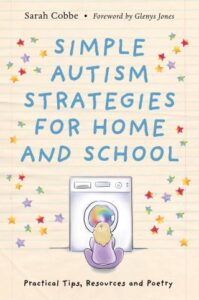
Offering a unique overview of a child’s point of view of life with autism, this guidebook will help parents and teachers better understand how this condition is experienced in a day to day life.
Part memoir, part guide, and part love letter, this book is an indispensable collection that invites parents and allies into the unique and often unheard experiences of autistic children and teens.
Written from the perspective of a child in elementary school, this comic-style story is aimed at children and adolescents who have a parent with Asperger’s Syndrome (AS). It provides scenarios and emotions that may be familiar to children who have a parent with AS, and it aims to help children realize that it is okay to have a parent who acts differently than other parents.
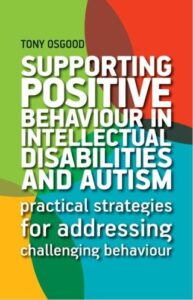
This highly practical book is an accessible and grounded handbook for addressing challenging behavior in children and adults with intellectual or developmental disabilities (IDD), including autism.
Complete with a training DVD and a parent manual, this book is full of easy guidance techniques for parents to use to facilitate social communication in children ages birth to six years old. The practitioner’s guide can be used for practitioners to train parents on these techniques, either individually or in a group, and the parent manual provides easy-to-follow guidelines to help parents implement these techniques with their own children.
This guide details the major characteristics associated with autism. It suggests how teachers and parents can connect with children in meaningful ways to encourage those with autism to learn and grow.
The authors provide a reference guide to this condition. Entries include the different types of autism, treatments, social impact, possible causes, and more.
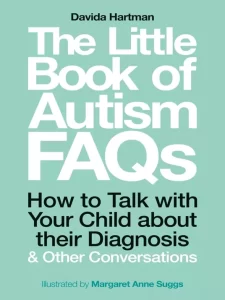
Empowering and practical, this guide is the perfect companion for parents whoa re finding it difficult to tell children about their autism diagnosis.
This book discusses the basics of anxiety and how common it is with children who have autism. The author talks about how to manage anxiety, support a child, and how to control the behaviors that come with anxiety.
Written specifically for children with autism, this book is full of stories about children with autism and methods that can be used to handle the problems that the children in the stories are facing. It touches on many subjects, including friendship, school success, personal hygiene, physical activity, and many more.
This text gives professionals the foundation they need to evaluate and compare today’s widely used interventions and determine which ones will promote the best outcomes. It combines the expertise of more than 30 top autism authorities across multiple disciplines and specialties. Readers will get a thorough introduction to 14-evidence-based interventions.
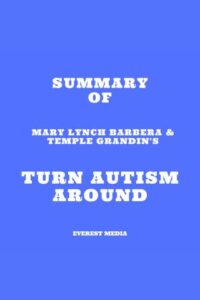
This book calls attention to an important fact: parents can make a tremendous impact on their child through behavioral practices taught at home, even in as little ass 15 minutes a day.
This book tackles new language such as shifting from “person-first language” to “identity-first language” diversity of identity in the autism sphere, and the future of autistic advocacy by amplifying the voices of autistic and neurodivergent individuals.
Co-written by the mother of a child with autism and by a psychologist, this book provides insightful stories and resources about issues such as eating, potty training, disciplining, siblings, bedtimes, speech, early intervention, and more with young children with autism.
Videos and Media
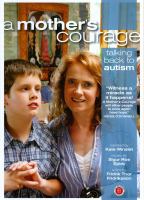
The true life story of a mother and her son with autism, this movie shows a mother’s journey for answers as she meets with autism experts and the families of other children with autism. The true highlight of her journey happens, though, in the discovery she makes about her son along the way.
This presentation suggests practical approaches to help families and educators support children who have behavior or self-management challenges.
This manual was made to assist parents in making decisions about how to help their children with autism spectrum disorders reach their full potential.
Temple Grandin, Jonathan Chase, and Steven Shore explore how Autism affects their lives, the benefits and drawbacks to being diagnosed, and how society can help those afflicted lead more fulfilling and productive lives.
This is a documentary about the screening and diagnosis of autistic spectrum disorders. It provides useful information for the early recognition and possible treatments of autism and related disorders
This lecture discusses assessment tools to identify the early and subtle signs of autism and offers treatment techniques that effectively interrupt and replace the development of many “coping behaviors” exhibited by children with autism (ages 0-5).
This DVD describes behavioral markers and developmental trajectories observed early in life in infants who have subsequently been diagnosed with ASD. Video clips illustrate these.
This program is for all ages and abilities. A multimedia program that transforms the mind and body through interactive “body puzzles,” this system was designed to activate the parasympathetic nervous system, providing participants with tool for self regulation in only a few minutes. A surprisingly simple, yet powerful combination of music, movements. The movements in MeMoves are designed to integrate the brain and body by creating new connections and strengthening those that already exist. Organized into three categories; Joy, Focus and Calm, users select one of 13 video sequences and follow along (imitate) the actions on the screen.
This DVD may be used by both parents and professionals to support preschool children with social and communication challenges, such as autism spectrum disorder. The DVD includes the research-based strategies parents can use in everyday activities to foster their children’s communication skills.
This seminar recording looks at the underlying factors of poor self-regulation and how they affect the child. Practical interventions are emphasized.
Siblings of kids who have autism have unique perspectives on Autistic Spectrum Disorder. These wise siblings ages four to eighteen tell us about their frustration, their pain, and their growth to acceptance and their exceptional loyalty to their siblings.
This DVD features interviews with children with autism and their parents. Issues discussed include the difficulty of getting an accurate diagnosis, parental acceptance of the diagnosis, communication, and beginning school.
This video shows parents and professionals several behaviorally based interventions including verbal behavior, pivotal response, natural environment teaching, and the picture exchange communication system (PECS).
The implementation of visual supports can significantly improve a child’s independence, interaction with others and participation in the early childhood years. This program will address the use of schedules, mini-schedules, calendars, transition tools, choice boards, social stories and picture cues to enhance communication and structure the learning environment.
Organizations
Autism Speaks is both an advocacy and support organization. Its Web site includes a definition of autism along with family resources, science news, and local chapters. You can find links to articles, tool kits, worksheets and other resources for caregivers of young children with autism., such as resource for Young Children (0-3).
This organization provides treatment options and a variety of resources for parents, providers, and children who have autism or care for someone with autism.
A site specifically designed and created to support military families that have children with autism.
The Autism Program at the University of Illinois Urbana-Champaign, an affiliate of The Autism Program of Illinois, provides a resource & referral center, library, learning aids, and more.
Articles
Early intervention may be delayed for autism spectrum disorders because children have not received a formal diagnosis. Parents often notice the features of ASD from an early age. Speech and communication difficulties and behavior problems were the most often reported. This study was designed to document how parents described the features that caused them to be concerned.
The authors studied families of children with autism spectrum disorders who were using early intervention and early childhood services to examine the perceived effectiveness of the services and service delivery methods. Parents reported that parent training was most effective in contributing to their child’s development.
Web Resources
The Autism Speaks kit was created for families to use following their child’s diagnosis of autism. It can be downloaded for free.
AFIRM Modules are designed to help you learn the step-by-step process of planning for, using, and monitoring an evidence-based practice (EBP) with learners with ASD from birth to 22 years of age. Each module includes key components of an EBP including the various approaches that can be used with learners with ASD, behaviors, and skills that can be addressed using the practice, a step-by-step process for applying the practice, and specific resources that you can download and customize for your own use. The AFIRM for Toddlers is a set a of modules developed for early interventionists working with toddlers, families, and early care providers.
This 2-page PDF offers families and professionals a brief description of Autism and Pervasive Developmental Disorders, some behavioral symptoms that a child with autism could exhibit and some strategies for overcoming challenges that may be associated with autism. More guides can be found on their Disability Guides page.
EITP offers a variety of national and regional resources related to Autism.
This is a database of resources in local communities. It includes contact information for ASA chapters and other local supports.
This collection of timely articles is divided into different categories including, key findings, feature articles and easy reading. Additionally, it has a list of recommended articles listed by year of publication.
Each child is unique. Infants reach such milestones as waving bye-bye or smiling in response to a smile at different ages. Discuss any concerns with a doctor so the child can be screened. A child who is identified with an autism spectrum disorder (ASD) can begin getting special help. This may limit the symptoms and help the child lead a fuller life. Available in multiple languages.
Developed with input from parents, people who serve the autism community, and people with autism, See Amazing in All Children offers families ways to manage common challenges, to simplify everyday activities, and to grow connections and support from family, friends, and community.
On this page, you will find several free resources about safety, research, transition, assessment, etc. for families
This interactive, mobile-friendly, video-based resource for families in the autism community is divided into six simple sections filled with videos and tools to guide you in the right direction as you navigate the IEP journey and the school system with your child. Sections include IEP basics, getting an IEP, developing an IEP, changing an IEP, changing an IEP, disputing an IEP, and important things to remember.
There are many things you can do to help a child with Autism Spectrum Disorder (ASD) overcome their challenges. These parenting tips, treatments, and services can help.
This page has tools and information about autism spectrum disorders (ASDs) for educators. It includes a childcare provider resource kit.
This blog discusses factors of resilience in families with autism.
Illinois Early Learning (IEL) staff prepare and regularly update resource lists related to popular topics (many addressed by guest experts). These Resource Lists contain a wealth of information on early care and education, including Web materials, IEL resources, and listings of relevant articles and books.
This toolkit provides seven strategies that are designed to meet the unique needs of individuals with autism during the COVID-19 outbreak and other uncertain times. In addition, examples and ready-made resources are included to help caregivers implement these strategies quickly and easily.
The Modified Checklist for Autism in Toddlers, Revised, with Follow-Up™ developed by Diana Robins, PhD, is a tool used to detect Autism Spectrum Disorders in young children.
These infographics provide tips on preventing challenging behavior and using visual cues and prompts with young children.
